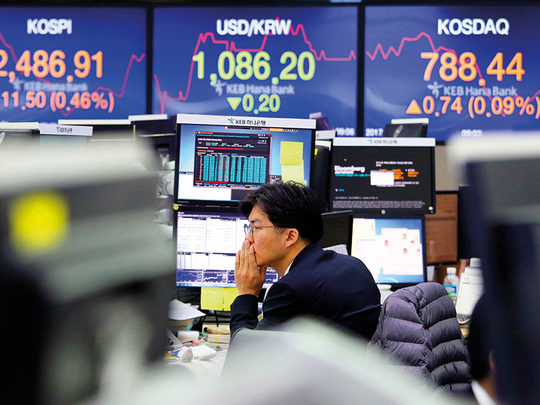
How worried should you be about current financial market valuations? Global equities have provided investors returns of almost 21% in USD terms since the start of this year alone, making them more expensive relative to earnings since the start of the year. The story is a similar one for global corporate bonds, with year-to-date returns of just over 7.5 per cent, reducing yield premiums over benchmark US government bonds to their lowest since the 2007-08 crisis.
Unsurprisingly, this performance often leads to a common concern: have equity and corporate bond market valuations become too expensive for investors to add further exposure at current levels? We believe the answer is no — we see continued opportunities in both equities and corporate bonds.
It may be helpful to set some context. Valuation metrics should not be used as indicators of expected returns in isolation. They can be helpful as indicators of future returns over long periods of time (usually 5-7 years for equities, for example). However, valuations on their own tend to be much less useful over shorter periods of time, especially if one’s time horizon is less than a year, when other factors (such as liquidity) can dominate.
The magnitude of over- or under-valuation also matters. Most financial asset classes rarely spend much time at ‘average’ valuation levels. A more pertinent question, therefore, may be whether valuations have reached a level at which they have become a constraint against delivering an attractive return.
A short history of US equity market valuations can offer an illustration. US equities currently trade at a 12-month forward price-to-earnings (P/E) of around 18. Over the past 20 years, valuations in the 18-20 level have tended to be followed by an average return of approximately 7 per cent over the following 12 months. Evidently, a 12-month forward P/E of just under 20 does not seem to be high enough to constrain future returns — historical data suggests average returns turned negative only after the 12-month forward P/E level rose above 22.
We draw similar conclusions for corporate bond markets. While it is sometimes argued that the nature of the asset class is somewhat different from equities (with a focus on yield as opposed to price returns for equities), we believe investors looking to hold or add exposure today can still learn lessons from history. Since the year 2000, almost 95 per cent of total returns till date in US investment grade corporate bonds have come from the coupon, with only about 5 per cent coming from movements in bond prices. The share of returns from coupons is higher for high yield bonds.
Closer to home, the conclusions are broadly similar for Asian USD-denominated corporate bonds, despite the market having a much shorter history. Price volatility has been a bigger contributor to returns in some years, but the broad conclusion is the same: returns for long-term investors are likely to be mainly driven by the yield on offer.
Interest rates
The history of equity and corporate bond markets, therefore, suggest that valuations are not yet a constraint on generating returns. Could the Fed derail this picture by raising rates? Broad measures of corporate debt suggest there is some room for interest rates to rise before the pressure is felt on corporate balance sheets, given today’s starting point for interest rates remains low relative to past cycles. In Asia, interest expenses as a percentage of earnings remains well below 2010-2011 highs. Therefore, as a potential source of risk, the Fed is likely an amber signal for the time being, not a red one.
Deleveraging efforts in China are often cited as another key potential risk, particularly for Asian corporate bonds. Measures of aggregate levels of debt do indeed appear high — China’s debt as a ratio of GDP has risen from just over 160 per cent in 2007 to almost 260 per cent in 2016. However, the picture is less dire when one specifically refers to the investible Asian USD-denominated corporate bond universe. Here, total net debt as a share of corporate earnings has fallen from 2013 peaks. This does not mean Asian corporate bond markets are likely to be insulated from broader debt concerns in China, but it does argue that the outlook specifically for Asia USD corporate bonds is not as dire as ‘China-deleveraging’ headlines may suggest.
— Manpreet Gill is head of Fixed Income, Currencies and Commodities Strategy at Standard Chartered Private Bank.







